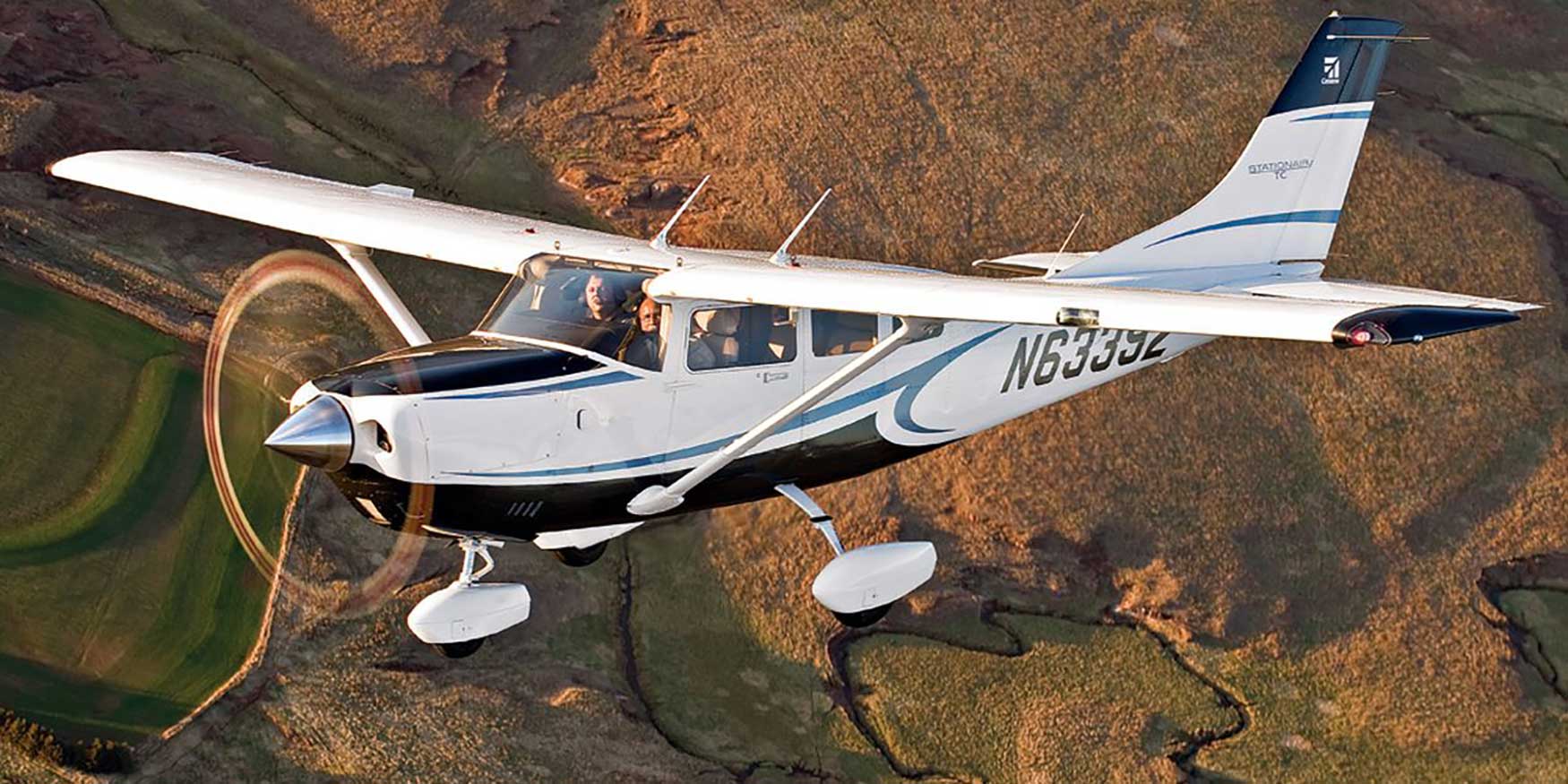Table Of Content
- Browse our Suppliers and their Products & Services, listed below the article:
- Cessna 172 vs 182 Best Aircraft For Flight Training School
- Landing distance ground roll
- Mysteries Of Flight: The Curious Case Of Pan Am Flight 914
- Limiting and Recommended Airspeeds
- Cessna U206 Performance and Handling Specifications

When searching for a Cessna 206 for sale, it's important to thoroughly evaluate the aircraft's condition, maintenance history, and documentation. Consider engaging a qualified aircraft mechanic or inspection service to conduct a pre-purchase inspection to ensure you're making an informed decision. It's important to note that the availability of features and amenities may vary depending on the specific model, configuration, and optional equipment chosen for the Cessna 206. These specifications and performance figures can vary depending on the aircraft's specific model, modifications, and operating conditions.
Browse our Suppliers and their Products & Services, listed below the article:
Using trim can alleviate the need for back pressure on the yoke, but one must be prepared to retrim quickly in the event of a go-around. Fortunately, there are indeed some payoffs at play.From the very beginning, cruise speed has been one of them. At the same power setting, an earlier 210 with wing struts cruises approximately 25 mph faster than an equivalent fixed-gear 206. Alternatively, one can select a lower power setting and enjoy lower fuel burn due to decreased drag. The 210 lost its wing struts in 1967 when the strutless cantilever wing made its first appearance.
Cessna 172 vs 182 Best Aircraft For Flight Training School
While the Stationairs have large cabins, they’re not long on comfort with a full load of passengers. Noise levels, particularly during takeoff and climb, can be fairly high as piston-engined singles go. And the rear-most seats—row three in the 206, rows three and four in the 207—leave little in the way of legroom. With or without the cargo pod, the Stationairs offer ample loading flexibility. The allowable CG range is unusually long, making cargo/passenger positioning less of a juggling act than with many aircraft.
Landing distance ground roll
Long-term durability of the 206's Lycoming has yet to be established since the application is so new, but TBO is published as 2,000 hours. In all, the turbo system adds about 75 to 80 pounds to the airframe, including the 78-cubic-foot oxygen system and larger oil cooler. Overall, the new-to-the-206 Lycoming TIO-540 engine was very smooth, like the Continental TSIO-520 engine that powered the 206 through the end of production in 1986. It is crucial to adhere to the manufacturer's guidelines, regulatory requirements, and industry best practices to maintain the safety and airworthiness of the Cessna 206. Regular maintenance, following proper procedures, and prioritizing safety contribute to safe operations and enjoyable flying experiences.
Mysteries Of Flight: The Curious Case Of Pan Am Flight 914
Powered by a single Continental IO-520 engine, the Cessna 206 offers reliable and efficient performance for both short-haul and medium-range flights. The Cessna 206, part of the legendary Cessna single-engine piston aircraft family, is a versatile and reliable aircraft renowned for its durability, performance, and adaptability to various missions. Introduced in the late 1960s, the Cessna 206 quickly gained popularity among private pilots, charter operators, and government agencies worldwide due to its robust construction and excellent flight characteristics. Its high-wing configuration, spacious cabin, and rugged landing gear make it well-suited for a wide range of missions, including passenger transportation, cargo hauling, aerial surveying, and aerial photography. Whether flying into remote airstrips, conducting utility operations, or performing recreational flights, the Cessna 206 excels in delivering dependable performance in diverse operating environments. Cessna pilots say they feel comfortable operating the T206 out of a 2,000-foot or longer hard-surface runway.
Colombia plane crash: Four children found alive in Amazon after 40 days - BBC.com
Colombia plane crash: Four children found alive in Amazon after 40 days.
Posted: Sat, 10 Jun 2023 07:00:00 GMT [source]
Limiting and Recommended Airspeeds
CESSNA 205/206/"STATIONAIR"€ - Plane & Pilot
CESSNA 205/206/"STATIONAIR"€.
Posted: Thu, 28 Jan 2016 08:00:00 GMT [source]
Additionally, the Cessna 206’s reputation for durability and longevity, coupled with comprehensive maintenance and support services, underscores its status as a trusted workhorse in the general aviation community. With its proven track record and enduring popularity, the Cessna 206 continues to serve as a dependable and versatile platform for a wide range of aerial missions around the world. Additionally, the 206 has a slightly lower wing loading, indicating a potential for better low-speed handling characteristics. On the other hand, the Cessna 210 offers a slightly higher useful load and baggage capacity, making it more suitable for carrying heavier loads over long distances. The Cessna 210 also has a higher rate of climb, demonstrating its efficiency in reaching cruising altitude. Each aircraft has its advantages, with the choice depending on the pilot’s needs, whether it’s performance, altitude capabilities, or load carrying requirements.
Cessna 206 Stationair
But whether the components pass inspection or are ultimately replaced, you can forget these ADs once completed and documented. Speak with 206 and 210 owners, and their most noteworthy takeaway is just how unnoteworthy they found their transitions into the types. With relatively consistent operation and handling qualities across the Cessna model line, owners reported virtually no red flags or concerns involved in the transition. One owner recommended attending the 206 Systems and Procedures Course at the Cessna Pilots Association. They also suggested that those with a turbocharged option attend the Advanced Pilot Seminar with APS, who will teach you how to operate the turbo Lycoming engine.
Our ramp weight this June afternoon worked out to 3,270 pounds with two people on board, measured against a maximum weight of 3,809 pounds. Like a Cessna 172, the T206’s preferred fuel tank selector position is on “both,” except to cope with an imbalance. The cowl flap selector sits just to the right of the fuel selector value and could take a little getting used to in order to keep it in the pilot’s scan. The Turbo Stationair® HD piston's high-wing design offers better visibility, greater ground clearance and highly accessible pilot and cargo doors. The rule of thumb most of us used was that if the tails of the floats started to look even with the surface of the water before the pilot climbed on board, you were headed for a challenging takeoff. If I could get the airplane on the step, it would eventually come off the water, even if you had to lift one float at a time on glassy water.
Cruise speed/endurance w/45-min rsv, std fuel (fuel consumption, ea engine) @ 75% power, best economy
If you trimmed it to fly neutral, you simply ran out of elevator when it came time to flare, and you ate up a lot of runway. If you kept the trim the same as when loaded (the plane, not the pilot) all you had to do was put out full flaps, slow it down till the needle bobbled around 50 knots, and carry a little power. Once on short final, about 200 feet out, start flaring and cut the power as you went over the cornfield fence. You had to really haul back to get a good flare, but if you did, it easily stopped in 300 to 400 feet. Though the new Stationairs did suffer a loss in useful load, they could still best the overall performance figures turned in by the older legacy fleet.

In addition, important airspeeds such as VR (rotation speed), VX (best angle of climb), and VY (best rate of climb) are plainly marked on the airspeed tape. Of course, the MFD views can be customized according to pilot preferences, and a thumbnail moving map can be called up in the lower-left corner of the PFD. Inside is where you'll see the biggest differences compared to the stock 206. Millennium Editions (available for the 172SP, Skylane, and Stationair) are all outfitted in leather with the logo embossed into the seat backs, yokes, and floor mats. Rosen tinted sun visors reside at the top of the windshield, rather than the opaque gray plastic panels used in standard Cessnas.
The TIO-540 engine seems to be happy at 18 gallons per hour at maximum cruise at nearly all altitudes giving speeds from 160 knots at 12,000 feet to 170 knots at 18,000 feet. I looked at the 206, 210, Cherokee Six and the Lance/Saratoga retractable. I opted for the weight-carrying ability of the 206 and a non-retract because of my limited flying time, plus the high wing matters when dealing with the Arizona sun. I did not look at 206s with fuel bladders as I did not want to deal with their potential problems. Top cruise speeds will run in the 145-knot area while burning 17 gallons per hour or more.
The passenger-biased P206 models provide three separate entry points to the cabin. Each front seat has its own door, and a third smaller door provides access to the left-side back seat. Opinions vary based on spryness and flexibility, but one P206 owner with whom we spoke describes this rear door as somewhat more difficult to utilize than that of a Cessna 150. The door lacks a footrest to assist ingress and egress, and the door opening is relatively small. The more generic components such as filters, wheels, tires, and brakes are off the shelf and stocked by large aviation suppliers like Aircraft Supply, Aircraft Spruce & Specialty, or Wag Aero.
Early models had 40 degrees of flap, which helped tremendously for short arrivals. However, the airplane just won’t climb with that much aluminum hanging out in the breeze. The PFD uses vertical-tape representations of airspeed and altitude, complete with magenta trend lines. These show the airspeed and altitude anticipated in the next six seconds.
In fact, rudder movement was needed throughout the flight, contrary to the feet-flat-on-the-floor method of flying that many pilots use these days. Cessna also markets a luxury version of the big single, emphasizing its capabilities of carrying executives or families for short to medium trips. The 206 Stationair had been such a Cessna success story that many thought it was only a matter of time before it came back into production. The aging fleet of big piston singles was still coming and going from virtually every type of runway in the world, polishing its reputation as the world’s best heavy hauler.
The Edos seemed to be a good design for the 206, almost always easy to get out of the water even when loaded; the 206 with PKs was a dog. My flights were in and out of lakes and rivers in Alaska and in salt- and fresh- water operations from Seattle north to the Inside Passage in British Columbia, Canada. My best story came out of a sad event—my daughter was badly injured in a skiing accident, suffering numerous fractures. We used the big cargo door opening to easily get her into the fully-reclined rear seat, strapped her in and stuffed pillows around her. I bought it for personal use as there is six of us in our family, including my 6-foot-4-inch son.
A shorter runway is possible but demands a bit more planning, a topic that led Chelsea and me to a discussion of power settings. The T206 likes 39 inches of manifold pressure for takeoff and climb, pulled back to 30 inches for cruise. Cowl flaps are almost always open from takeoff to level off for cruise. But this performance comes with a price, the need to be a bit gingerly with the throttle to prevent overboosting the engine. The pilot must also watch the turbine inlet temperature gauge to prevent cooking the engine in the climb, because the internal turbine creates an enormous amount of heat.

No comments:
Post a Comment